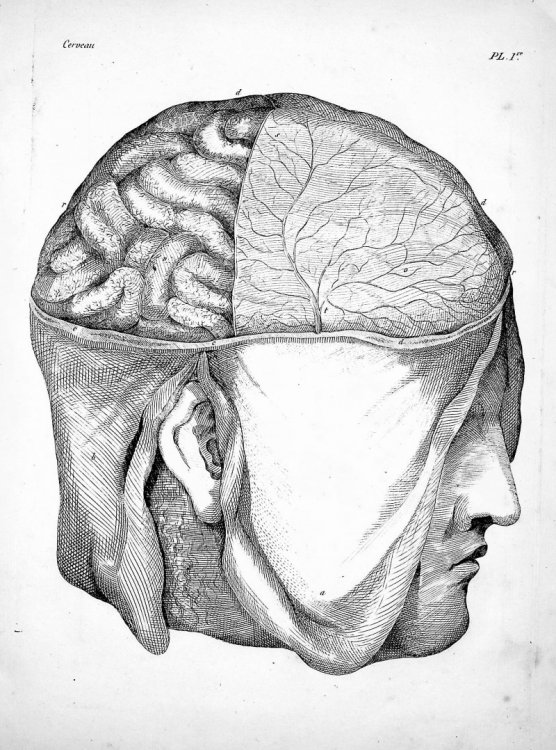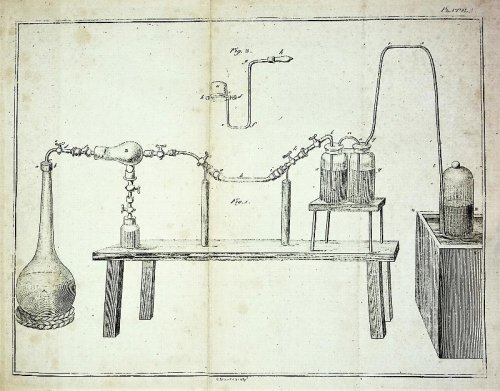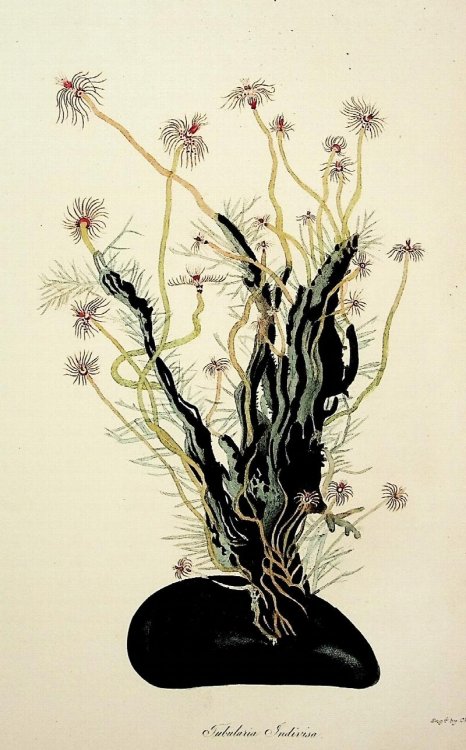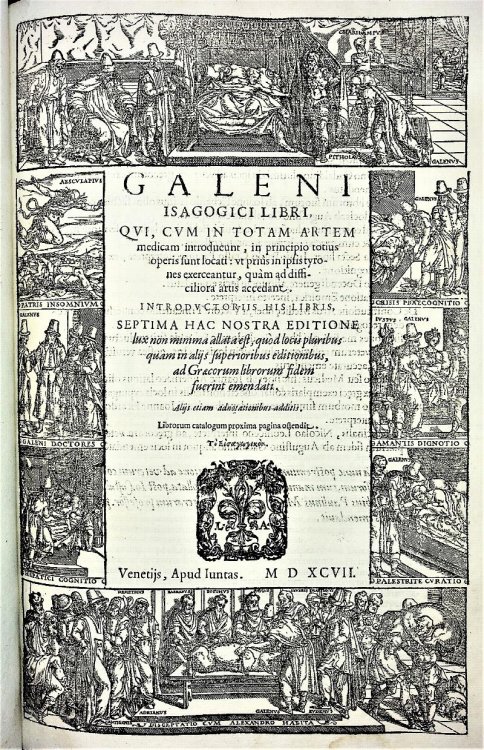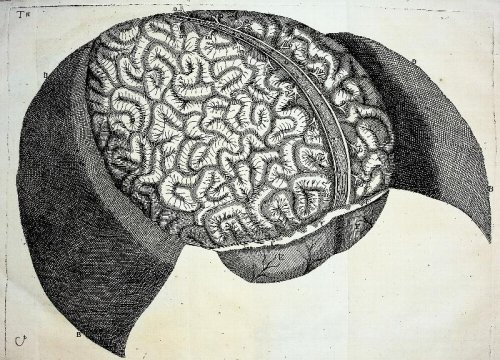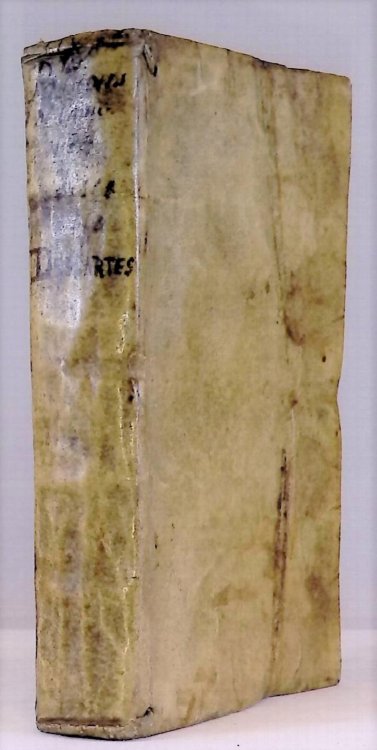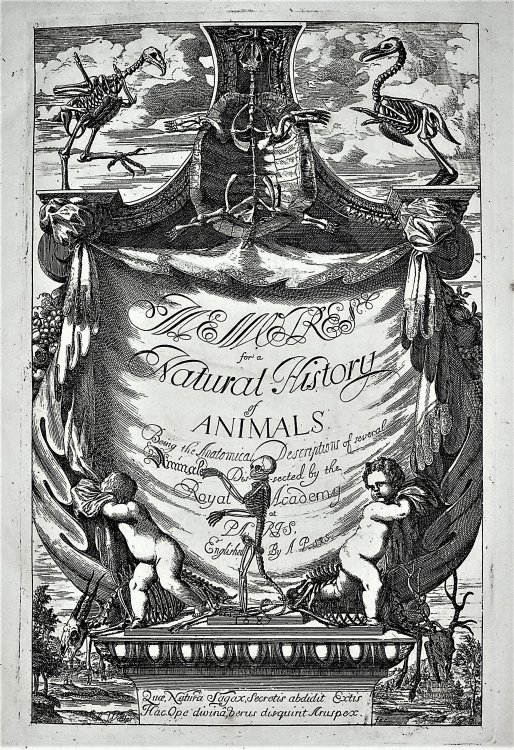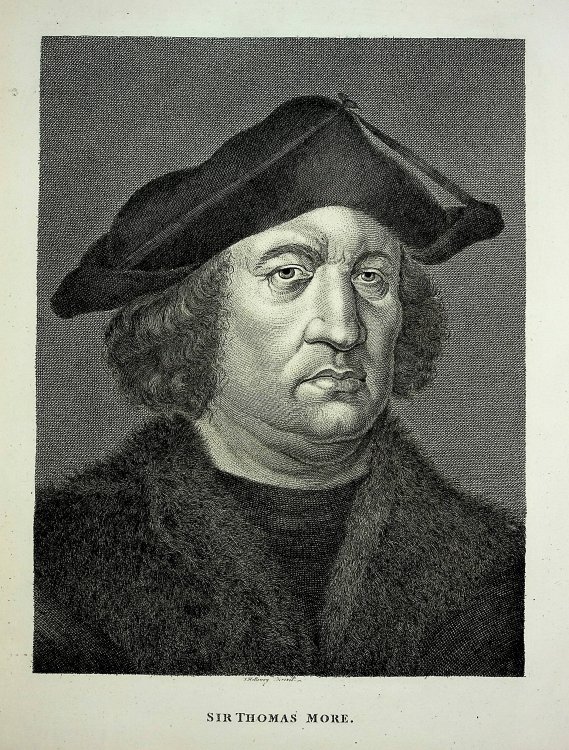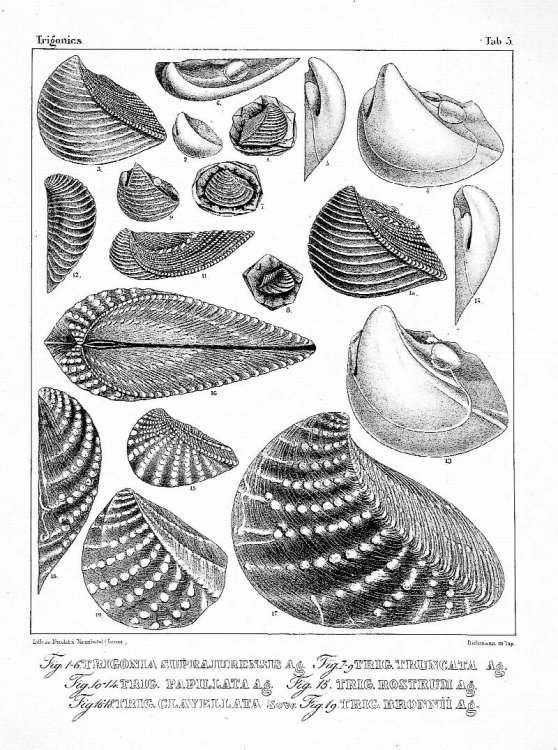
Etudes Critiques sur les Mollusques Fossiles
$1,500.00 USD • Used
1845 LARGE ATLAS OF FOSSIL MOLLUSCS ILLUSTRATED WITH OVER 100 FINE LITHOGRAPHIC PLATES BY SWISS PALEONTOLOGIST WHO BECAME EMINENT HARVARD PROFESSOR.
11 inches tall hardcover, 3/4 leather...
1845 LARGE ATLAS OF FOSSIL MOLLUSCS ILLUSTRATED WITH OVER 100 FINE LITHOGRAPHIC PLATES BY SWISS PALEONTOLOGIST WHO BECAME EMINENT HARVARD PROFESSOR.
11 inches tall hardcover, 3/4 leather binding with gilt-ruled marbled paper-covered boards, spine with raised bands, gilt title and gilt compartments, top edge gilt, marbled endpapers, bookplate of Robert L. Chevalier MD to front paste-down, xxii, 1-141, [1], 143-287, 105 fine lithographed plates. Binding tight, wear to cover edges and corners, residue from library labels removed from bottom spine, handstamp of Earth Sciences Library to verso title page, fore-edge and bottom edge, handstamp of San Francisco Microscopical Society to front free endpaper, residue from removed library labels and withdrawn handstamp to back endpapers, light foxing to text, occasional foxing to plates, overall very good minus in custom archival mylar cover.
JEAN LOUIS RODOLPHE AGASSIZ (1807 - 1873) was a Swiss-born American biologist and geologist who is recognized as a scholar of Earth's natural history. Spending his early life in Switzerland, he received a doctor of philosophy and a medical degree at Erlangen and Munich, respectively. After studying with Georges Cuvier and Alexander von Humboldt in Paris, Agassiz was appointed professor of natural history at the University of Neuchatel in 1832. The fossil fish in the rock of the surrounding region, the slates of Glarus and the limestones of Monte Bolca, soon attracted his attention. At the time, very little had been accomplished in their scientific study. Agassiz as early as 1829, planned the publication of a work. More than any other, it would lay the foundation of his worldwide fame. Five volumes of his Recherches sur les poissons fossiles (Research on Fossil Fish) were published from 1833 to 1843. In gathering materials for that work, Agassiz visited the principal museums in Europe. Meeting Cuvier in Paris, he received much encouragement and assistance from him. In 1836, the Wollaston Medal was awarded to Agassiz by the council of that society for his work on fossil ichthyology. In 1838, he was elected a foreign member of the Royal Society. Meanwhile, invertebrate animals engaged his attention. In 1837, he issued the Prodrome of a monograph on the recent and fossil Echinodermata, the first part of which appeared in 1838; in 1839-1840, he published two quarto volumes on the fossil echinoderms of Switzerland; and in 1840-1845, he issued his Etudes critiques sur les mollusques fossiles (offered here). He emigrated to the United States in 1847 after he visited Harvard University. He went on to become professor of zoology and geology at Harvard, to head its Lawrence Scientific School, and to found its Museum of Comparative Zoology. Agassiz is known for his regimen of observational data gathering and analysis. He made vast institutional and scientific contributions to zoology, geology, and related areas, including the study of geological history, leading to his founding a theory of glaciology.
Product Info
Publisher: H. Wolfrath
Year: 1842-1845
Type: Used
Binding: Softcover
Seller Info
BiomedRareBooksLLCABAAILABIOBA
Address: P.O. Box 193 North Garden, Virginia
Website: https://www.biomedrarebooks.com
Country: United States

